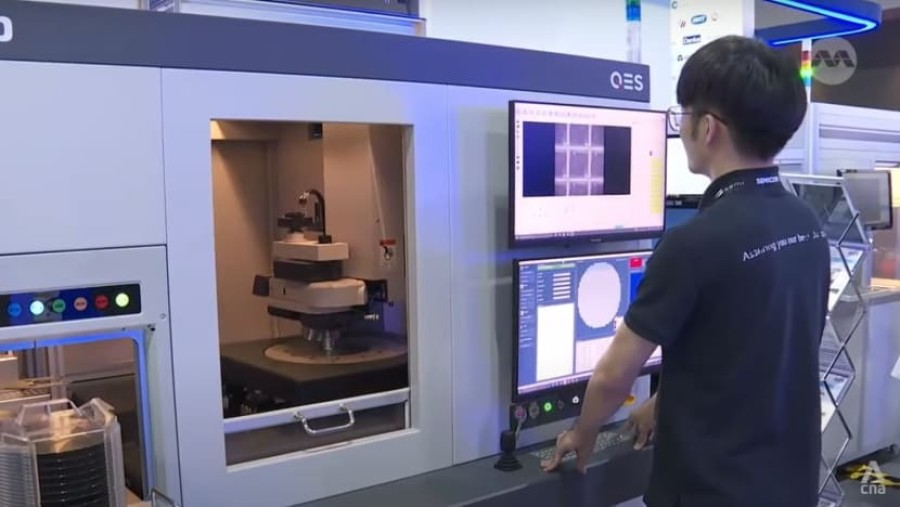Malaysia aims to be global powerhouse in highly competitive integrated circuit design sector

Trainee engineer Izaac Chong recently joined an 18-month on-the-job training programme at an integrated circuit (IC) start-up firm, hoping to make his mark in the highly competitive industry.
He is among several young IC designers who were hired by MaiStorage – a pioneer at the newly-launched Malaysia Semiconductor IC Design Park located in Puchong, Selangor state.
Spanning 5,574sqm, the park was the country’s first chip design hub and the largest in Southeast Asia. It is an integral part of Malaysia’s plans to penetrate the IC design market and position
The Puchong park is expected to bring in economic returns of RM500 million (US$118 million) to RM1 billion, according to Selangor Information Technology and Digital Economy Corp (SIDEC) chief executive officer Yong Kai Ping.
Over a handful of local and foreign semiconductor design companies have signed up to set up shop there. Many were offered free rent and utilities for three years and received help with recruitment and training.
The park so far has received thousands of resumes. Malaysia currently produces about 5,000 engineering graduates a year, but it needs 10 times more to elevate its semiconductor industry to front end manufacturing and IC design.
Each IC park requires 400 to 600 engineers who are trained in computer science, mechanical and electronic engineering, according to SIDEC.
“There's a global war for talent in terms of hardware and software, so what we are doing now to solve the talent problem is we are co-investing in another project beside the IC park – around RM200 million to build a school,” Mr Yong told CNA.
This school – the Malaysia Advanced Semiconductor AI Institute – is not meant to compete with universities, but rather to act as a link between universities and the industry, he said.
HARD WORK NOT ENOUGH: EXPERTS
For Mr Chong the trainee engineer, he said that with tech giants looking at Malaysia, there is a once-in-a-lifetime opportunity to quicken the process of creating AI chips and producing its market-driven end products
He and his fellow trainees were tasked to come up with a customised integrated circuit design by working on different intellectual property (IP) blocks.
“Nowadays, we are talking about designing ICs for artificial intelligence (AI), and then you need to have a certain blend of creativity in it … but you need to put in hard work. Hard work solves the problem,” the 24-year-old told CNA. However, industry experts had some advice: Hard work alone is not enough.
They said IC designers must be prepared to put in the hours like their counterparts in Japan, Taiwan and South Korea. "In Taiwan, if you are in TSMC, for example, when you want to do the chip … (You have to work) around the clock. It never stops,” said Mr Azlan Jizam, founder and CEO of Virtual Reality Solutions.
“Try to do it here in Malaysia, you will get a lot of complaints: ‘This is crazy, you're making people work non-stop’,” added Mr Azlan, who worked for more than 20 years in Japan’s tech sector.
He added that IC design is a closed industry dominated by a few big players, meaning that penetrating the market is no mean feat.
TRADE TENSIONS BENEFITING MALAYSIA
On another front, continuing trade tensions between the United States and China have presented Malaysian companies with a window of opportunity.
With the segmentation of the semiconductor industry, customers are “more open” to other solutions from “more neutral countries” like Malaysia, said Mr Fong Swee Kiang, founder and CEO of Malaysian start-up Skyechip.
The company was set up four years ago and specialises in providing IP and IC solutions for AI. It currently has 300 designers and more than 30 patents, and is slated for possible listing on Bursa Malaysia – the country’s stock exchange – next year.
“In the past, let’s say for silicon IP, it (was) dominated by companies like Psygnosis, Cadence, Rambus and so on,” Mr Fong pointed out.
That situation has since changed. “I think that earned us the window to offer our IP solutions,” he added.
All this is music to the ears of Malaysia’s Economy Minister Rafizi Ramli, who wants to inspire more local tech champions.
"Eventually IC design companies want to be listed. The proximity to Klang Valley … is important. There is also the proximity to the talent pipeline. Most of the country's top education institutions are in Klang Valley,” he told CNA.
"I'm hoping that the next five-year plan (is) where people go directly to the industry, they get certified. Eventually, they can go all the way to a degree and that, in a way, de-bottleneck the whole process,” he added.
